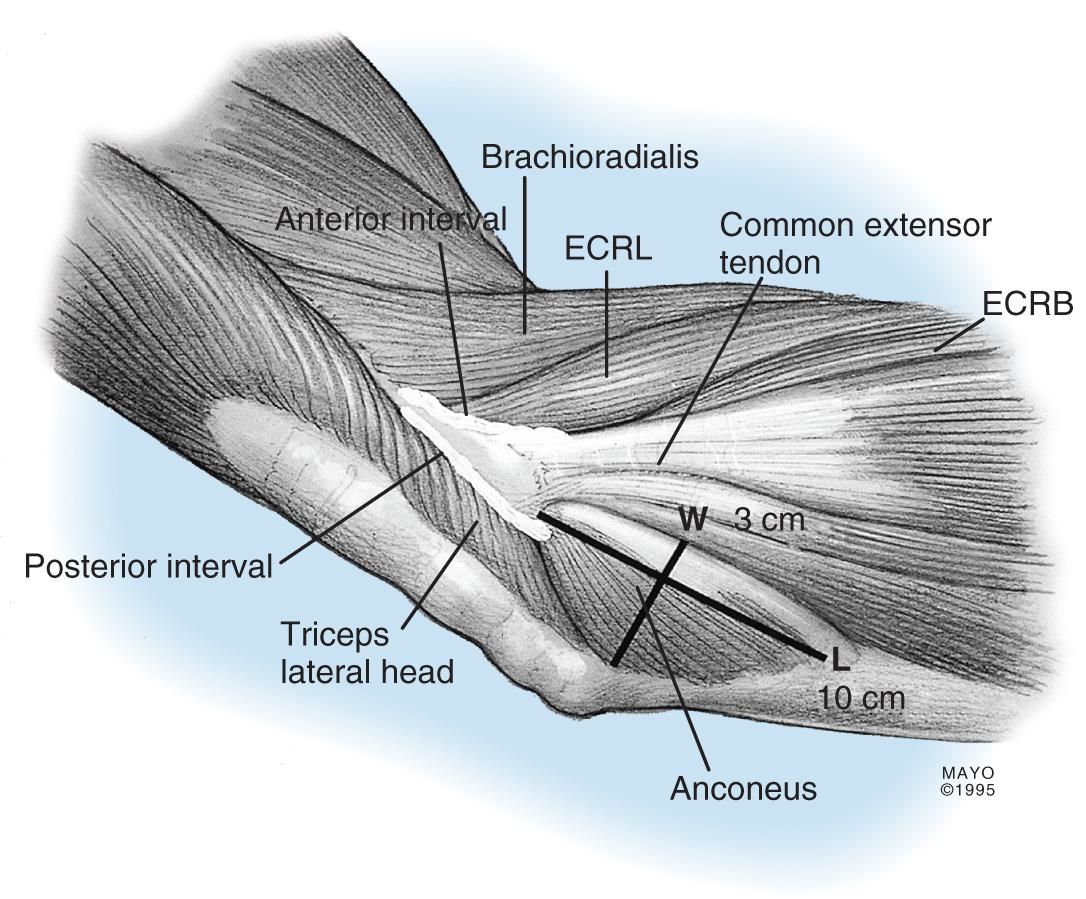Physical Address
304 North Cardinal St.
Dorchester Center, MA 02124
Pain and disability resulting from posttraumatic, degenerative, or inflammatory radiocapitellar and/or proximal radioulnar pathology can be challenging to manage surgically. The anconeus arthroplasty offers a feasible surgical option to alleviate symptoms and to improve function of the radiocapitellar and/or proximal radioulnar joint. It is particularly attractive in the young patient when attempting to avoid prosthetic replacement and when there are few other options. Given this, the proximally based rotational arthroplasty utilizing the anconeus muscle as a flap interposition has been effectively utilized for the salvage of elbow conditions involving the radiocapitellar and/or proximal radioulnar joint.
The anconeus muscle is a triangular-shaped muscle originating posterior to the lateral epicondyle of the humerus and then fanning out broadly for an insertion base on the proximal part of the posterolateral side of the ulna. Cadaveric studies showed a mean length and width of approximately 9 to 10 cm (range, 6 to 12 cm) and 3 to 3.5 cm (range, 1.5 to 5 cm), respectively ( Fig. 113.1 ). The muscle length is approximately one-third the length of the ulna. The muscle is mainly vascularized from the medial collateral artery and the recurrent posterior interosseous artery. It is innervated through a branch derived from the radial nerve that travels beside the medial collateral artery to the muscle. The anconeus muscle functions as an accessory extensor beside the triceps brachii and possibly contributes to posterolateral elbow stability during forearm rotation. However, its absence from its anatomic location does not lead to any measurable dysfunction or morbidity. Morrey and Schneeberger described the anconeus interposition arthroplasty by fully mobilizing the anconeus muscle from the ulna with preservation of the proximal neurovascular bundle and then interposing it at the radiocapitellar joint, proximal radioulnar joint, or both. Thus, the interposing vascularized muscle can provide a viable soft tissue cushioning and avoid the bony impingement, although a load-bearing function would not be expected. Additionally, rerouting of the anconeus underneath the lateral collateral ligament complex tends to enhance ligamentous tension and overall elbow stability.

The technique is employed in younger and more active patients with radiocapitellar and/or proximal radioulnar dysfunction where the capitellum or the radial head pathology was deemed not amenable to joint replacement. Generally, this can be in instances of lateral elbow osteoarthritis (primary, chondropathic, or posttraumatic arthritis), and/or Essex-Lopresti injury. Symptomatic failed prior surgical interventions such as radial head resection or replacement, failed internal fixation of a radial head, or capitellar fractures are all potential indications for this procedure. Therefore, the three primary indications for the procedure are:
Radiocapitellar arthritis in which the interposition is principally directed at the proximal radiohumeral articulation
Proximal radioulnar impingement with or without radiocapitellar involvement
Limitation of forearm rotation due to synostosis or fibrosis of the proximal radioulnar relationship in which an interposition material is desired to eliminate recurrence or impingement following resection
The primary contraindication to this procedure is an absent or devitalized anconeus muscle. A condition requiring a procedure that resists high axial loads along the radius would also rule out use of an anconeus arthroplasty. Lastly, a deficient lateral collateral ligament complex that cannot be reconstructed prohibits use of this procedure.
Become a Clinical Tree membership for Full access and enjoy Unlimited articles
If you are a member. Log in here